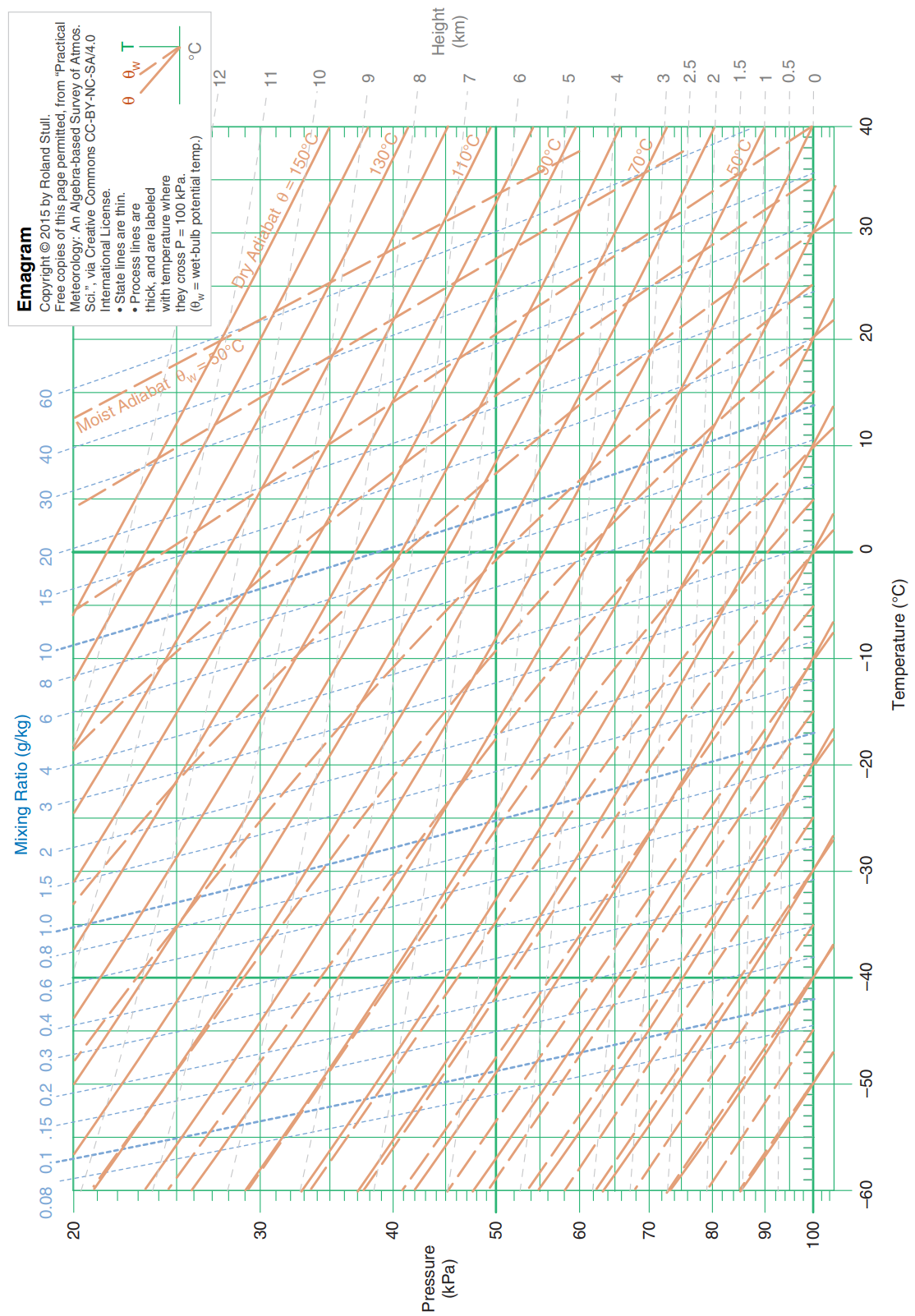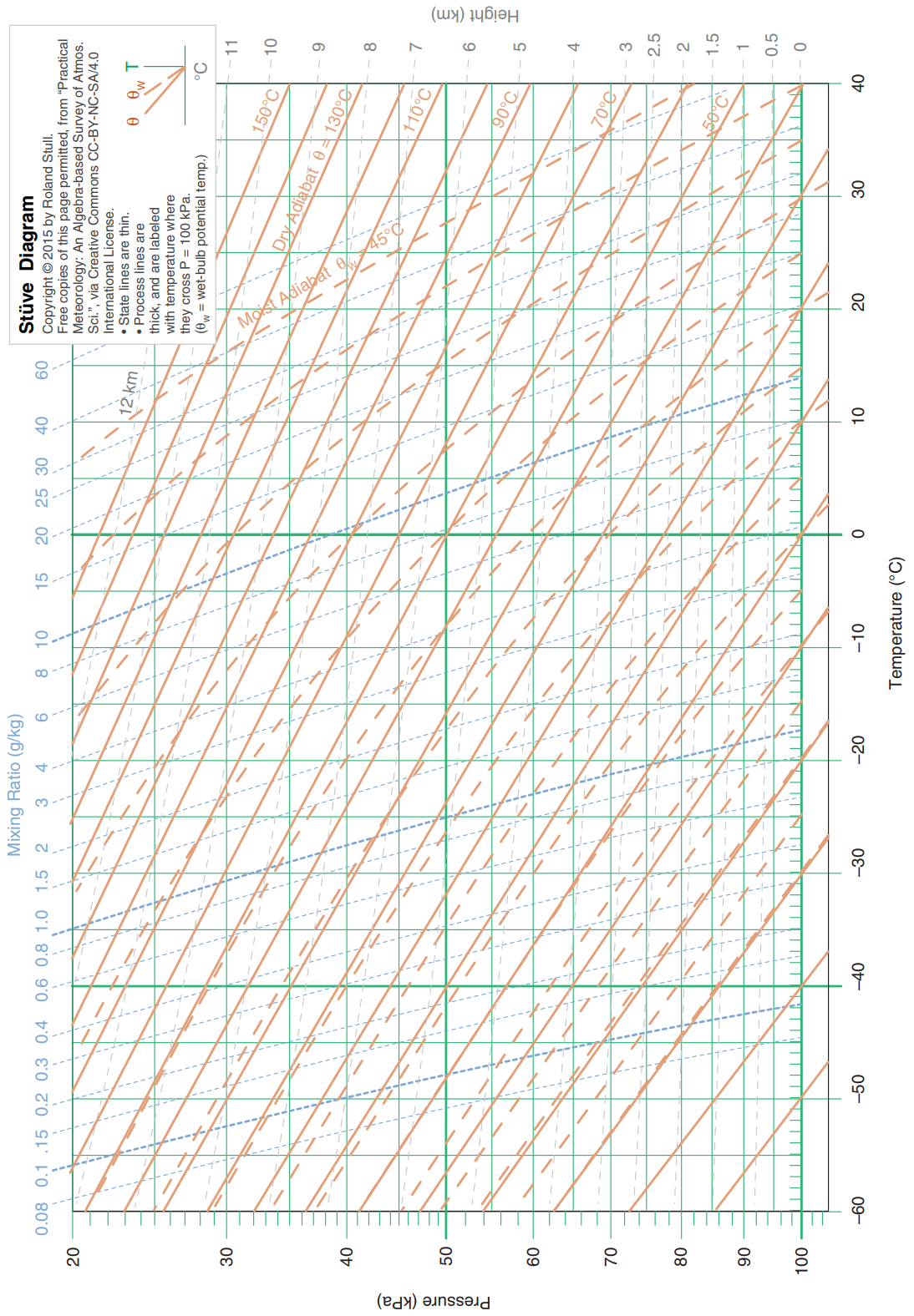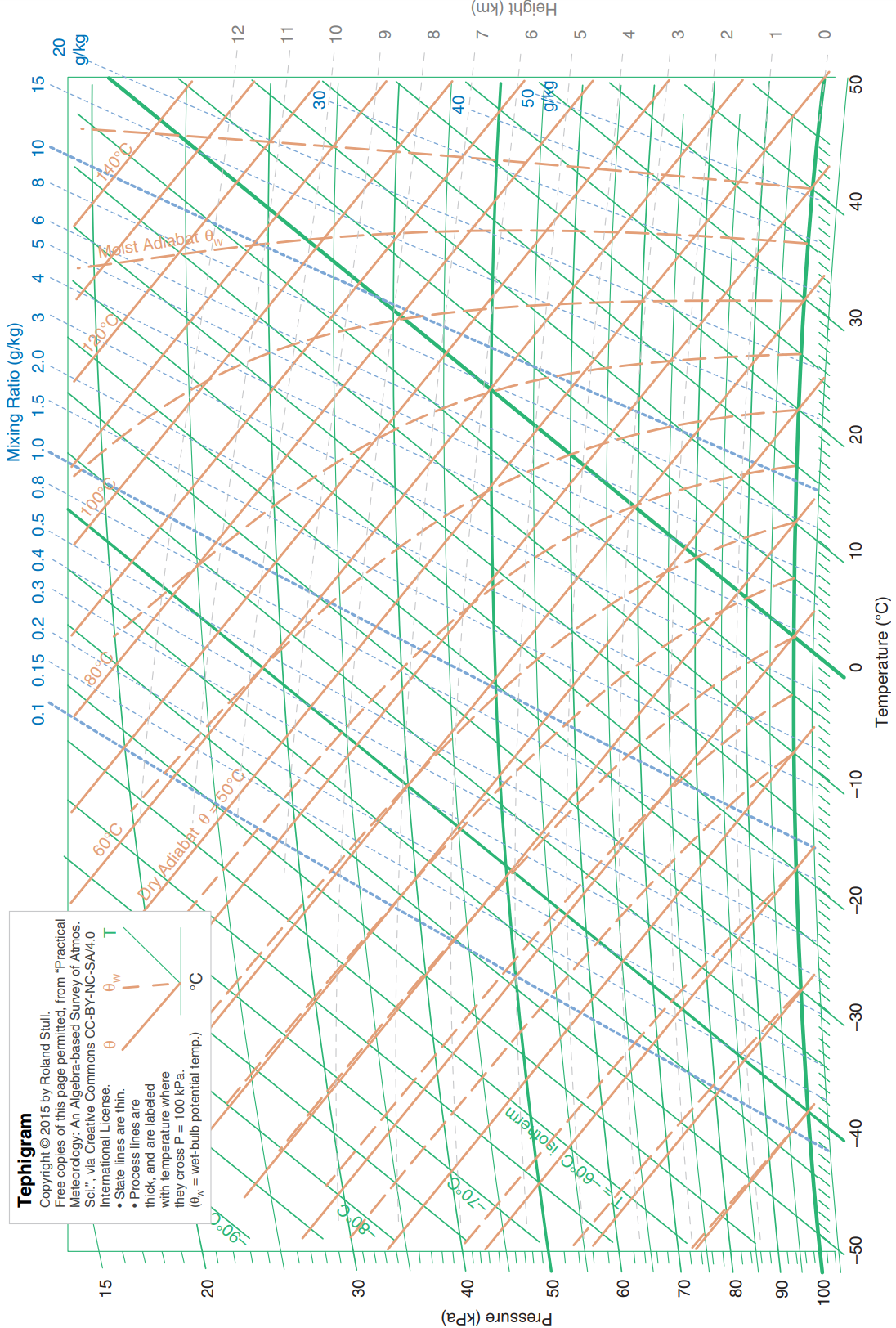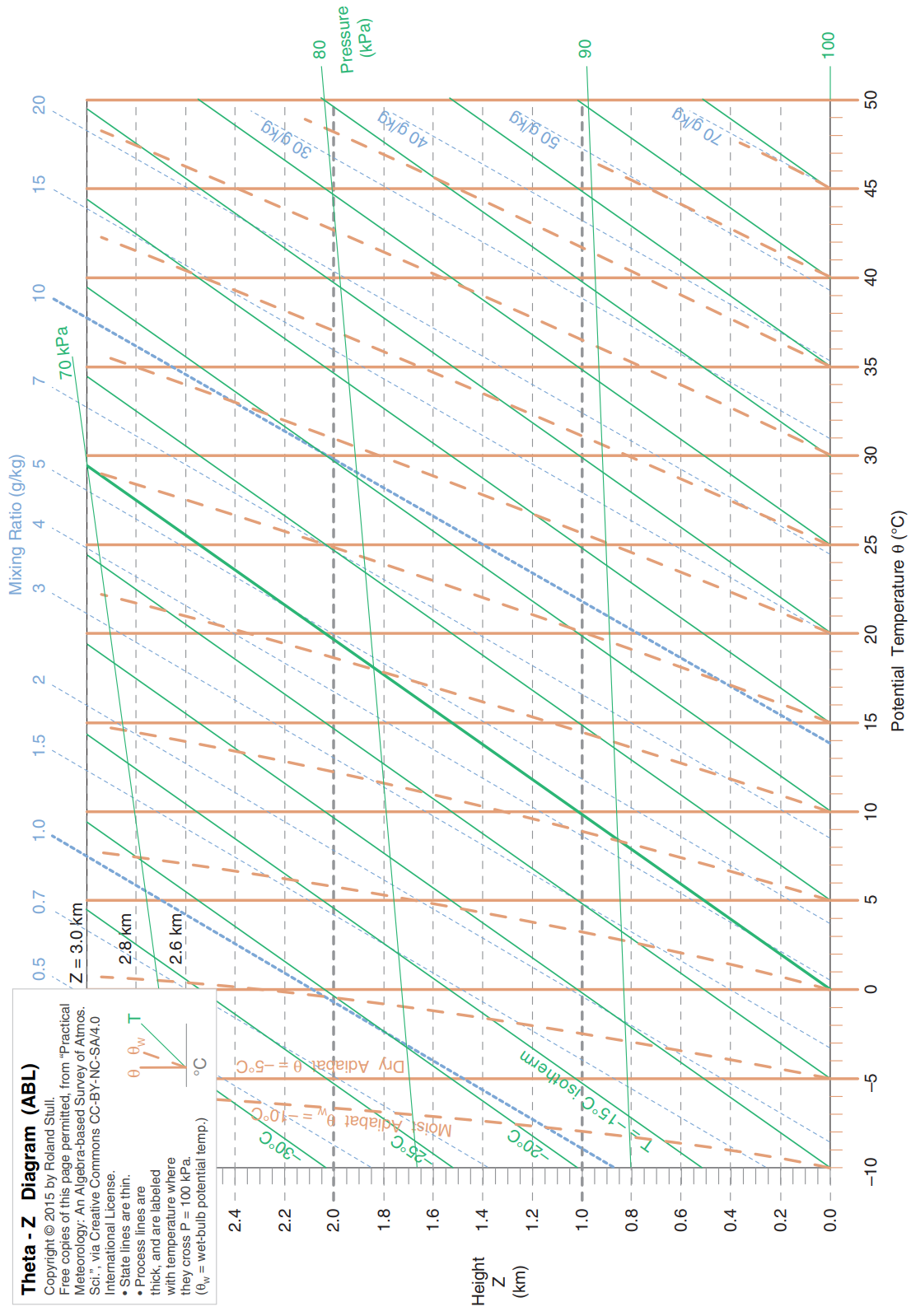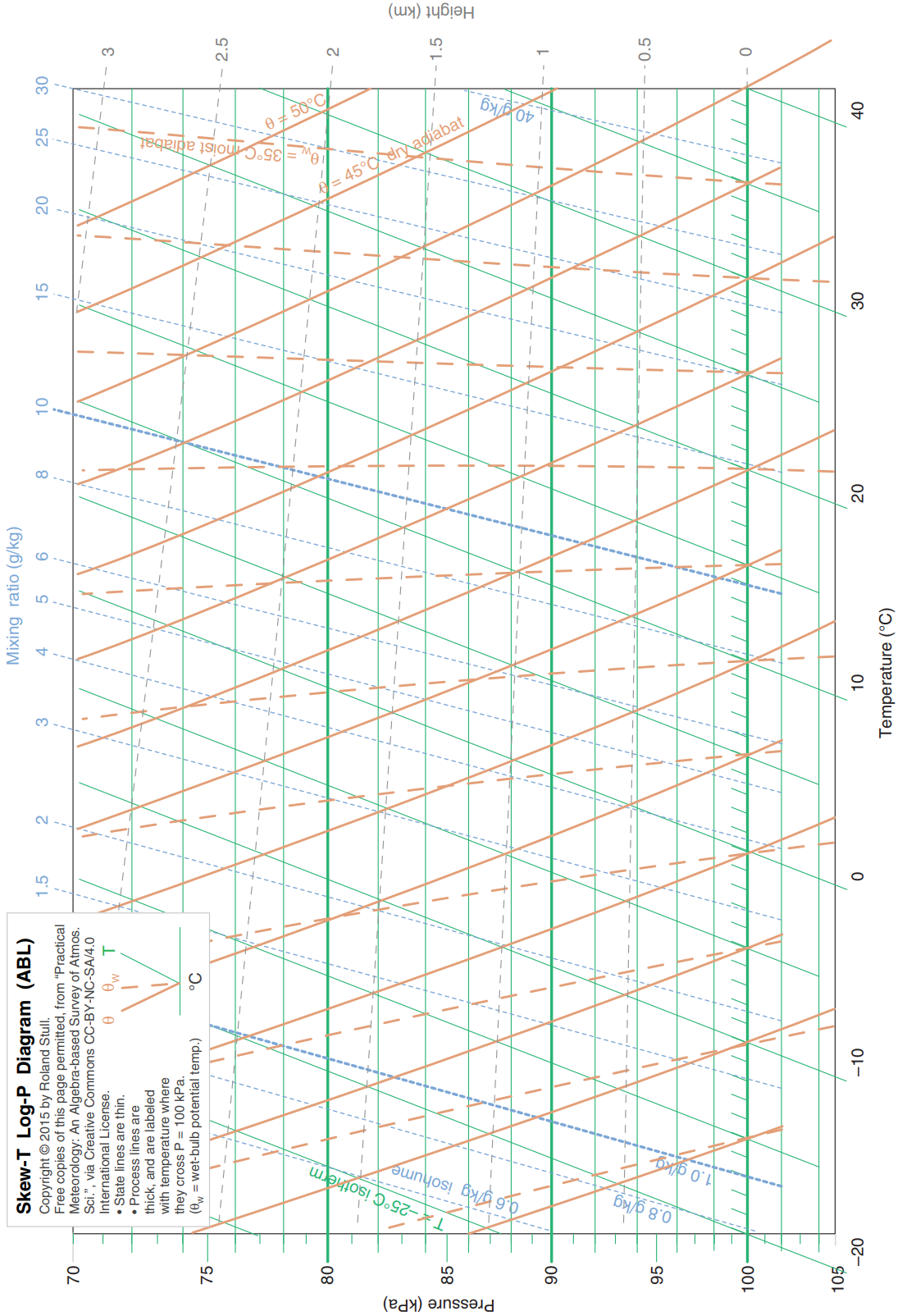5.1: Large-Size Thermo Diagrams
- Page ID
- 9925
You have our permission to freely reproduce the following seven thermo diagrams for your own personal use, or for education (but not for commercial resale), so long as you retain the author, title, and publisher citations in the copies. The diagrams are printed in faded colors so your own plotted soundings will be easier to see. We recommend that you do NOT write on the following seven pages, so that they remain as clean master copies.
These diagrams share common line formats: thin lines representing state of the air; thick lines representing adiabatic processes that change the state.
- Isotherms (temperature: T) and isobars (pressure: P) are thin solid green lines,
- Isohumes (mixing ratio: r) are thin dotted blue,
- Dry adiabats (potential temperature: θ) are thick solid orange lines,
- Moist adiabats (wet-bulb potential temperature: θw) are thick dashed orange lines,
- Contours (height: z) are very thin dashed grey lines (if plotted at all).
The height contours are only approximate. Potential temperatures are based on Po = 100 kPa, where we set z = 0 for simplicity at this reference pressure.
The line labels also follow a common format for most of the diagrams in this book:
- Isobar labels are along the left axis. Units: kPa.
- Isohume labels are along top axis (and right axis in one case). Units: g kg–1.
- Height labels are along the right axis. Units: km.
- Isotherms and both dry and moist adiabats are labeled at the bottom. Units: °C.
For this last item, the three isopleths sprout from each temperature label like branches from a bush. The branches are always in the same order, although their angles differ from graph to graph. Dry adiabats are the left branch, moist adiabats are the center branch, and isotherms are the right branch.
Two versions of the Skew-T and θ-Z Diagram are included. The standard version spans the range P = 105 to 20 kPa. The other version [with “(ABL)” added to the title] is designed for atmospheric boundary-layer and air-pollution work, and gives more detail in the bottom third of the troposphere.
On the next pages are these thermo diagrams:
- Emagram
- Stüve Diagram
- Skew-T Log-P Diagram
- Tephigram
- Theta-Z Diagram
- Theta-Z Diagram (ABL)
- Skew-T Log-P Diagram (ABL).
